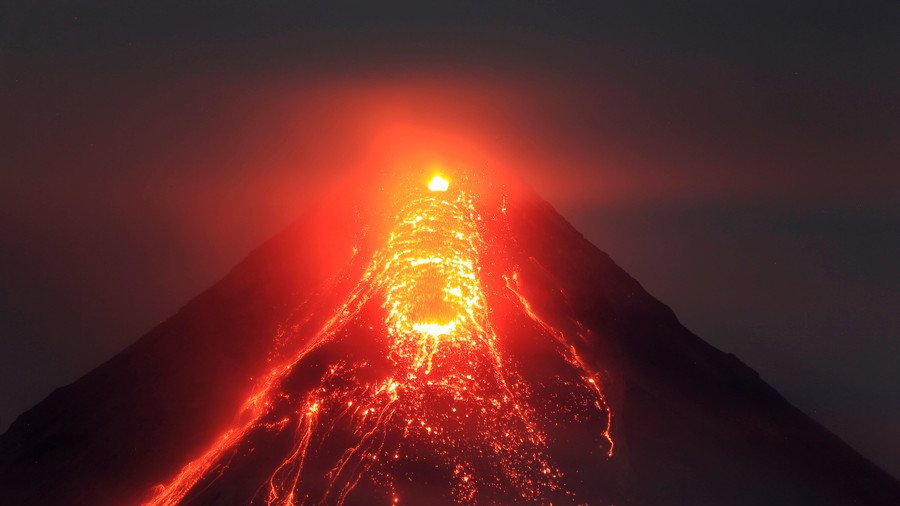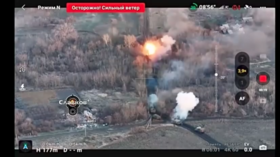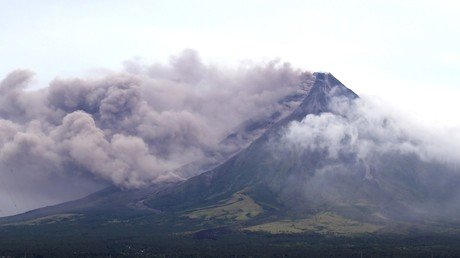World has no plan in place for next cataclysmic eruption – volcanologists

A team of volcanologists has warned that world governments are almost entirely unprepared for the next cataclysmic volcanic eruption, which could trigger unprecedented death, destruction and migration on a global scale.
The Volcanic Explosivity Index (VEI) scale classifies eruption incidents, and runs from zero to eight. Eruptions designated as ‘VEI-7’ level events occur just once or twice every thousand years but produce at least 100 cubic kilometers of ash, sulfur, carbon dioxide and other volcanic gases that circle the Earth multiple times over.
“The next VEI-7 eruption could occur within our lifetimes, or it could be hundreds of years down the road,” says Chris Newhall, a Philippines-based volcanologist and lead author of a new paper published in the journal Geosphere. The study examines the consequences of a potential VEI-7 event in the modern era.
The last VEI-7 event was the Tambora eruption of 1815 in Indonesia. It killed tens of thousands of people and led to a 'year without a summer' in both Europe and North America. It was so powerful and so destructive it is widely believed to have precipitated a centuries-long cold period known as the Little Ice Age.
#Yellowstone supervolcano doomsday theory ‘demonstrably false’ – USGS expert to RT https://t.co/dEdJPhUNIIpic.twitter.com/CMhQtGmbwK
— RT (@RT_com) December 3, 2017
Newhall, along with his co-authors volcanologist Stephen Self of the University of California, Berkeley, and Alan Robock, a climate scientist at Rutgers University in New Brunswick, New Jersey studied the VEI-5 and VEI-6 events at Mount St Helens in Washington State in 1980 and Mount Pinatubo in the Philippines in 1991, respectively. Both of the eruptions killed dozens of people and disrupted entire regions.
The Pinatubo event (VEI-6) released enough sulfur dioxide into the stratosphere to initiate a period of global cooling. However, a VEI-7 eruption would be far more devastating, in a far wider impact area. "Today, populations within 100 km of candidate volcanoes range from fewer than 1000 people in remote areas to between 20 and 30 million people near several candidates in Indonesia and the Philippines," the authors wrote.
READ MORE: Huge earthquakes in 2018 will put up to 1bn people at risk – scientists
“These things are hugely important for the planet, but the next one will take place in quite a different environment,” Robock said in a press release. Eruptions in certain critical locations could destabilize financial centers, national economies and even peace between nations with effects felt even more by our "high-technology, globally interdependent world," the authors argue.
To put things into a modern context, the Eyjafjallajökull eruption in Iceland in 2010 which disrupted European and North American air travel for days, resulting in an estimated economic loss of $5 billion, was only a VEI-3. With this example in mind, Newhall and his team believe that the world, as modern and interconnected as it is, is massively underprepared for a more powerful eruption equal to, or greater than, the VEI-6 Mount Pinatubo eruption.
"Given the incredibly complex logistics of food, water, health care, and other supplies in an urban area, imagine the logistical nightmare if transport within any large city were stopped even for a week or two. Millions of hungry people do not stay quiet for long. National leadership may be challenged and replaced," the researchers added.
Disastrous super-eruption could happen sooner than first thought https://t.co/jpH0UU8Aoopic.twitter.com/uVO4B3lE2Y
— RT (@RT_com) November 30, 2017
The team called for more research into the potential impact of changes in atmospheric moisture and the dispersion of volcanic ash on global positioning systems, critical to air and sea distribution networks upon which the global economy depends. Newhall and his fellow researchers also identified a number of potential candidates for the next VEI-7 including, but not limited to: Iran's Mount Damavand, just 50 kilometers (31 miles) outside Tehran or New Zealand's Taupo, the site of the world's last VEI-8 event which took place roughly 26,500 years ago.
"Preparation for such low-probability but high-consequence events is difficult to imagine, yet some modest early measures can be considered," the team concluded, adding, "let’s do what can be done, within reason, to plan and prepare for a VEI-7 event."
RT.com has contacted the authors for additional comment.
Like this story? Share it with a friend!













